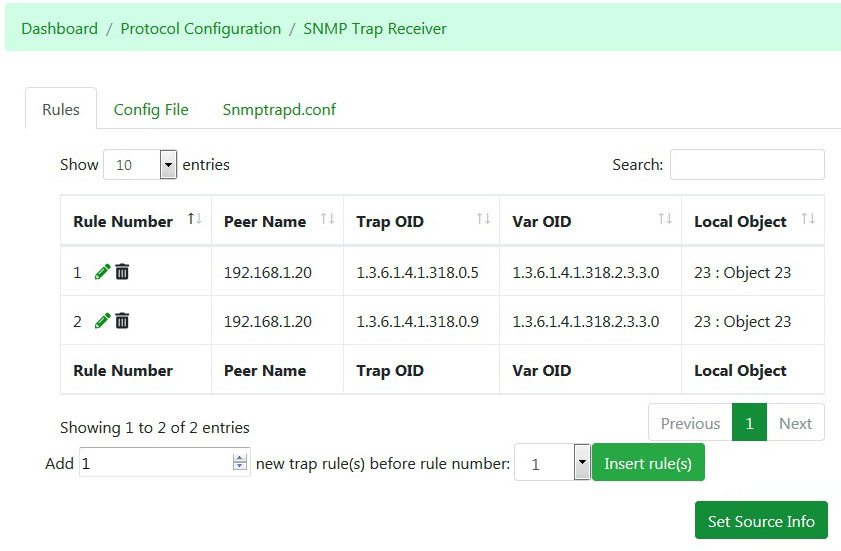
1.3.6.1.6.3.1.1.5.3 Normal "Status Events" localhost - Link down on interface 2. This will result in the following trap for SNMP interface with IP=192.168.1.1:ġ1:30:15 7. If the trap is formatted otherwise, Zabbix might parse the traps unexpectedly.ġ1:30:15 7. Note that "ZBXTRAP" and "" will be cut out from the message during processing.
- IP address used to find the host for this trap. ZBXTRAP - header that indicates that a new trap starts in this line. SNMP trap formatĪll customized perl trap receivers and SNMPTT trap configuration must format the trap in the following way: ZBXTRAP, where Net-snmp agent does not support AES256 with SNMPv3/USM. Note: Starting with Zabbix 2.0.5, user macros and global regular expressions are supported in the parameter of this item key.Ĭatches all SNMP traps that were not caught by any of the snmptrap items for that interface. This item is supported since Zabbix 2.0.0. This item can be set only for SNMP interfaces. If regexp is unspecified, catches any trap. In the Key field use one of the SNMP trap keys: KeyĬatches all SNMP traps that match the regular expression specified in regexp. 
The address from each received trap is compared to the IP and DNS addresses of all SNMP interfaces to find the corresponding hosts. In Configuration → Hosts, in the Host interface field set an SNMP interface with the correct IP or DNS address. (This is configured by "Log unmatched SNMP traps" in Administration → General → Other.)Ĭonfiguring the following fields in the frontend is specific for this item type:
If the trap was not set as the value of any item, Zabbix by default logs the unmatched trap. If no matching item is found and there is an "snmptrap.fallback" item, the trap is set as the value of that. The trap is set as the value of all matched items. For each found item, the trap is compared to regexp in "snmptrap". Note that only the selected "IP" or "DNS" in host interface is used during the matching. For each trap Zabbix finds all "SNMP trapper" items with host interfaces matching the received trap address. Zabbix SNMP trapper reads and parses the trap file. SNMPTT or Perl trap receiver parses, formats, and writes the trap to a file. snmptrapd passes the trap to SNMPTT or calls Perl trap receiver. Receiving SNMP traps in Zabbix is designed to work with snmptrapd and one of the built-in mechanisms for passing the traps to Zabbix - either a Perl script or SNMPTT. Using traps may detect some short problems that occur amidst the query interval and may be missed by the query data. Usually, traps are sent upon some condition change and the agent connects to the server on port 162 (as opposed to port 161 on the agent side that is used for queries). In this case, the information is sent from an SNMP-enabled device and is collected or "trapped" by Zabbix. Run the test alert command to generate an alert and SNMP trap.Receiving SNMP traps is the opposite to querying SNMP-enabled devices. 
# sudo /opt/emc/caspian/fabric/cli/bin/fcli-internal lifecycle alert.snmpconfigurationĮxample: Node 1:~ # sudo /opt/emc/caspian/fabric/cli/bin/fcli-internal lifecycle alert.snmpconfiguration

Confirm the configuration is set on the ECS after adding a trap configuration in the UI.







 0 kommentar(er)
0 kommentar(er)
